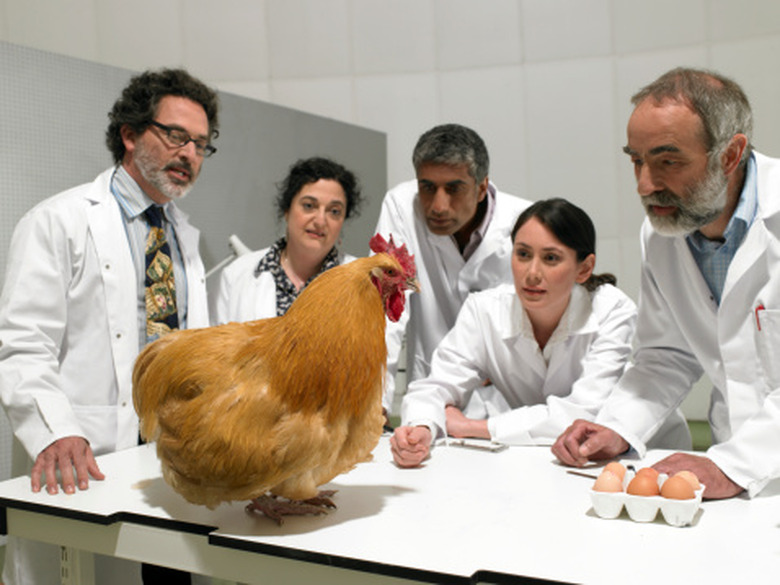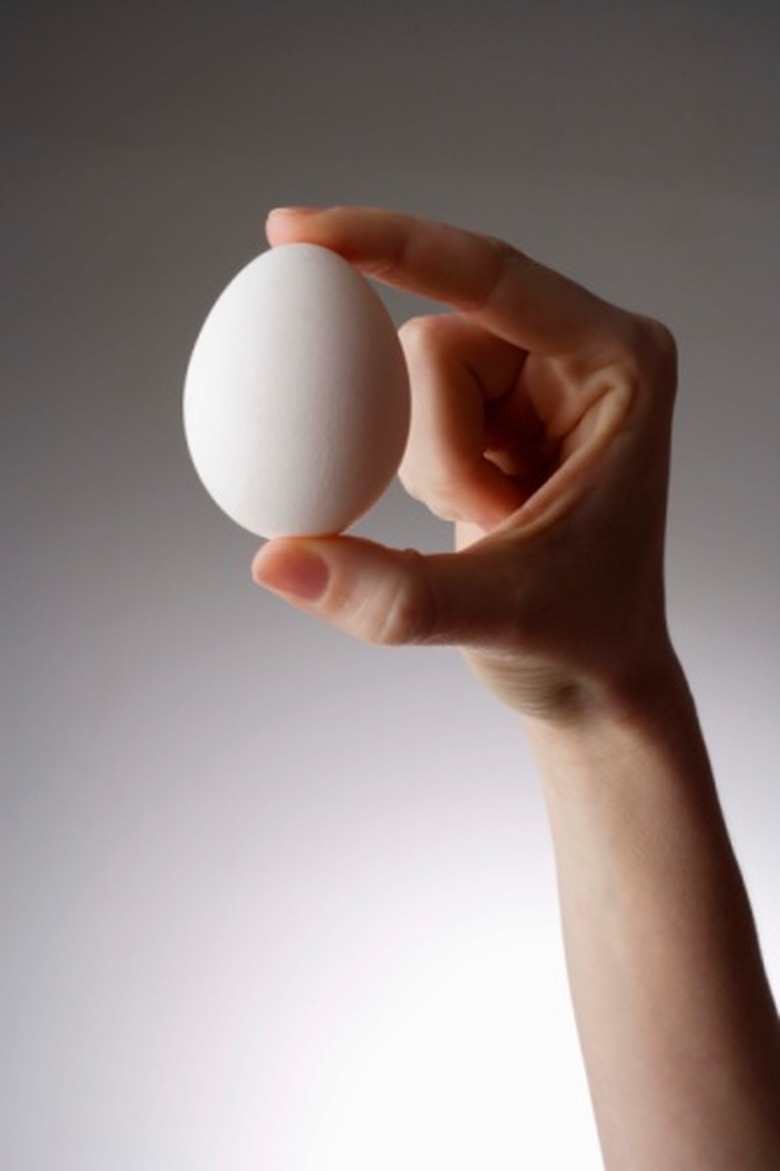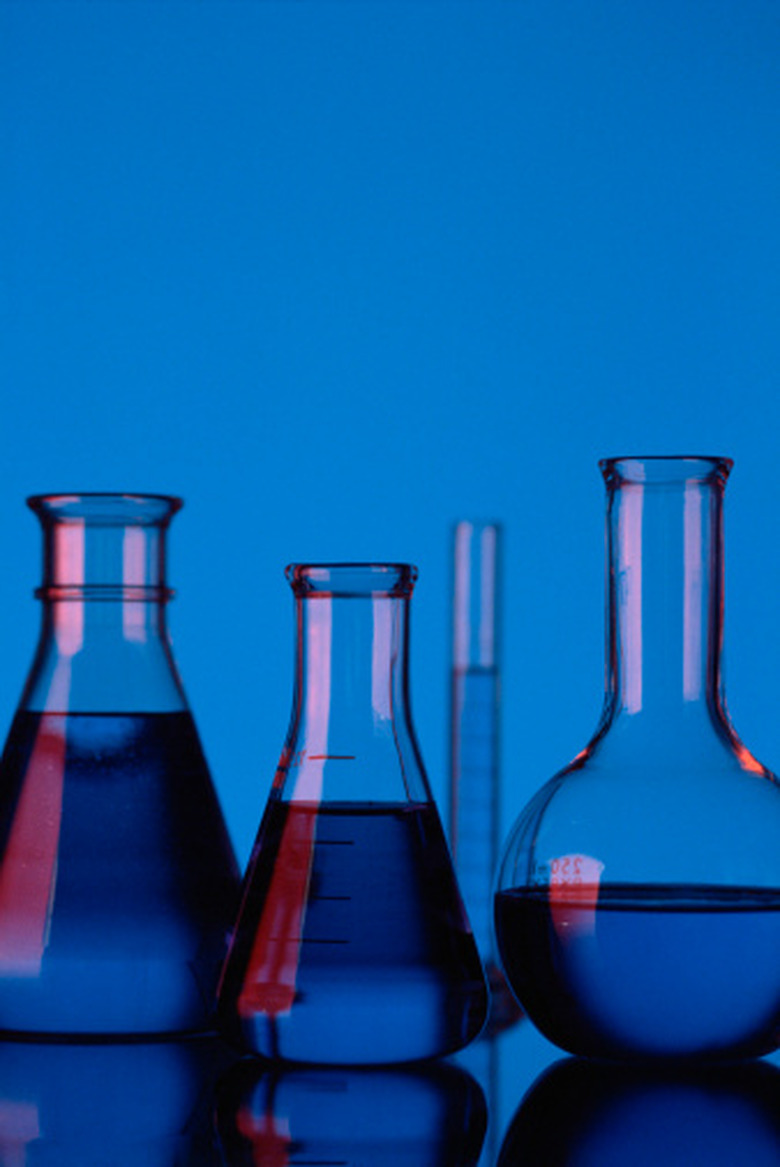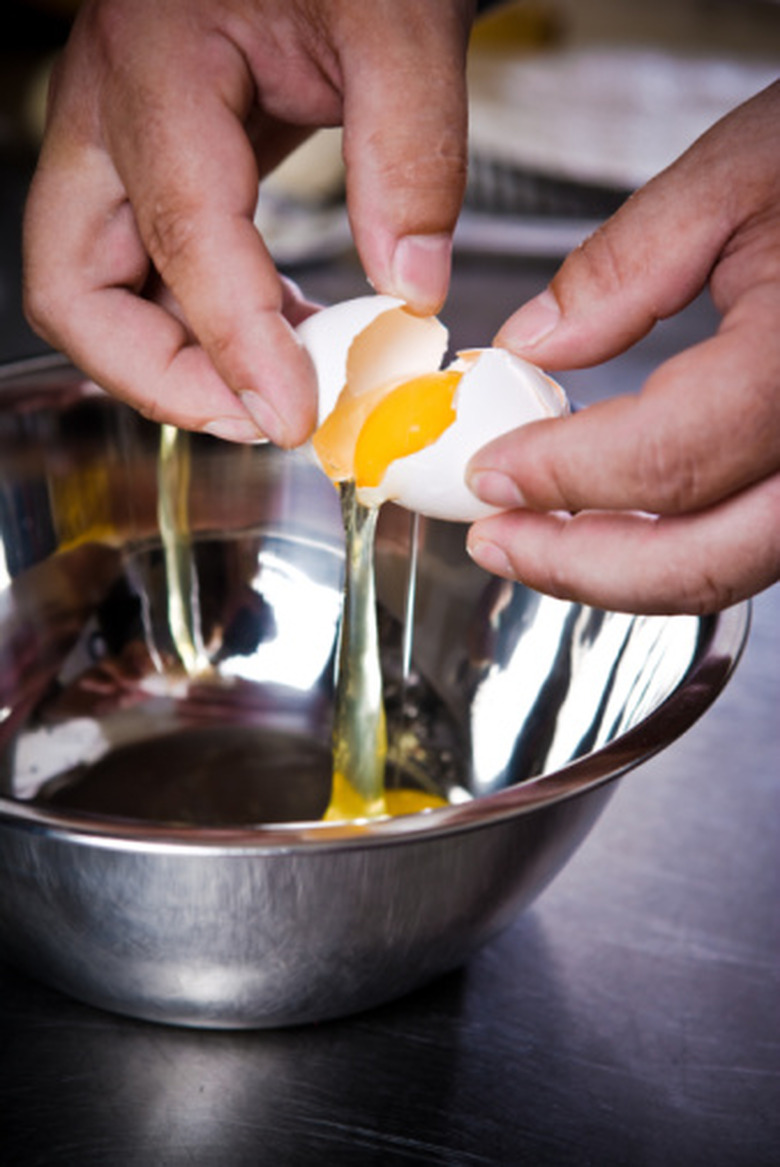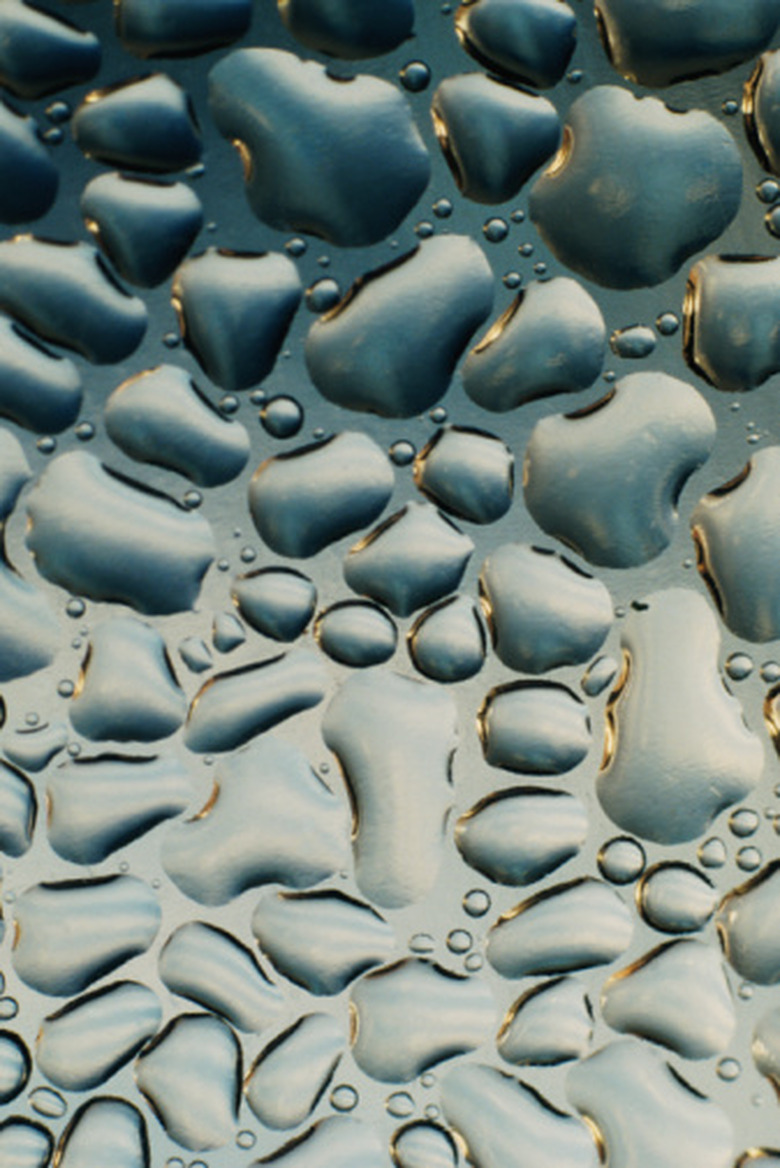Science Projects With Vinegar & Egg Shells
The vinegar and egg shells project is a classic elementary school experiment used to demonstrate the reaction of acetic acid and calcium carbonate. The vinegar will slowly dissolve the egg shell, resulting in a naked egg. You can easily expand this project to encompass such subjects as osmosis, egg anatomy and reaction kinetics.
Dissolving an Eggshell With Vinegar
Dissolving an Eggshell With Vinegar
Place an egg in a jar filled with vinegar. Wait a couple of minutes. You will begin to see some bubbles rising off the egg's surface. Let the egg sit in the vinegar for at least 12 hours before taking it out of the jar. You should observe that it has lost it's shell. It is now a naked egg. This is because an eggshell is made out of calcium carbonate, which reacts with acetic acid (vinegar) to form carbon dioxide gas, water and calcium acetate. The tiny bubbles that you saw at the beginning of the experiment were the escaping carbon dioxide gas.
Extend the Project
Extend the Project
You may take this experiment a step further by soaking several eggs in different concentrations of vinegar. Observe what happens to the size of the naked egg and the time it takes to strip the egg of its shell.
Anatomy of an Egg
Anatomy of an Egg
You will notice that the naked egg is not the same thing as a raw, broken egg. The naked egg holds its shape, and it is bouncy and soft. This is because of two thin keratin membranes that surround the egg: the outer and inner egg membranes. These membranes help to prevent bacterial infection, and hold the egg's shape.
Inside these two membranes lie the albumin (egg white) and the yolk. The albumin contains water and proteins. It helps to absorb shocks to the egg. The yolk contains, fats, vitamins and minerals. If you hold your naked egg up to the light, you may see the yolk in the center. Both the yolk and albumin support the life of the embryonic chick.
Osmosis
Osmosis
This project offers an ideal opportunity to learn about osmosis. The egg membrane is semi-permeable. It will allow the passage of water down its concentration gradient in a process called diffusion. This means that if there is a greater concentration of water outside of the egg, water will diffuse across the egg's membrane into the egg until equilibrium has been reached. The egg will expand. If there is a greater concentration of water inside the egg than outside, water will pass out of the egg through the membrane. The egg will shrink. To demonstrate this phenomenon, place a naked egg in a jar with enough corn syrup to completely cover it. Corn syrup has very little water in it, therefore the initial concentration of water inside the egg will be greater than outside. Water will diffuse out of the egg and into the corn syrup. You will notice that the egg will wrinkle and shrink. Place another naked egg in a jar filled with distilled water. Distilled water has very few impurities in it, while the egg's water is filled with proteins and minerals; therefore the initial concentration of water inside the egg is lower than the outside environment. Distilled water will diffuse into the egg and it will expand.
Cite This Article
MLA
Duchesne, Annie. "Science Projects With Vinegar & Egg Shells" sciencing.com, https://www.sciencing.com/science-projects-vinegar-egg-shells-7992423/. 24 April 2017.
APA
Duchesne, Annie. (2017, April 24). Science Projects With Vinegar & Egg Shells. sciencing.com. Retrieved from https://www.sciencing.com/science-projects-vinegar-egg-shells-7992423/
Chicago
Duchesne, Annie. Science Projects With Vinegar & Egg Shells last modified August 30, 2022. https://www.sciencing.com/science-projects-vinegar-egg-shells-7992423/
